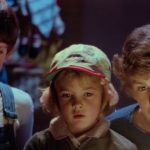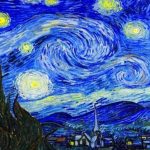 Our World
Our World  Our World
Our World  Movies and TV
Movies and TV The 10 Coolest Stars to Set Sail on The Love Boat
 History
History 10 Things You Didn’t Know About the American National Anthem
 Technology
Technology Top 10 Everyday Tech Buzzwords That Hide a Darker Past
 Humans
Humans 10 Everyday Human Behaviors That Are Actually Survival Instincts
 Animals
Animals 10 Animals That Humiliated and Harmed Historical Leaders
 History
History 10 Most Influential Protests in Modern History
 Creepy
Creepy 10 More Representations of Death from Myth, Legend, and Folktale
 Technology
Technology 10 Scientific Breakthroughs of 2025 That’ll Change Everything
 Our World
Our World 10 Ways Icelandic Culture Makes Other Countries Look Boring
 Our World
Our World 10 Ways Your Christmas Tree Is More Lit Than You Think
 Movies and TV
Movies and TV The 10 Coolest Stars to Set Sail on The Love Boat
 History
History 10 Things You Didn’t Know About the American National Anthem
Who's Behind Listverse?

Jamie Frater
Head Editor
Jamie founded Listverse due to an insatiable desire to share fascinating, obscure, and bizarre facts. He has been a guest speaker on numerous national radio and television stations and is a five time published author.
More About Us Technology
Technology Top 10 Everyday Tech Buzzwords That Hide a Darker Past
 Humans
Humans 10 Everyday Human Behaviors That Are Actually Survival Instincts
 Animals
Animals 10 Animals That Humiliated and Harmed Historical Leaders
 History
History 10 Most Influential Protests in Modern History
 Creepy
Creepy 10 More Representations of Death from Myth, Legend, and Folktale
 Technology
Technology 10 Scientific Breakthroughs of 2025 That’ll Change Everything
 Our World
Our World 10 Ways Icelandic Culture Makes Other Countries Look Boring
10 Classic American Songs That Started in Minstrelsy
In the early 1800s, Americans used to enjoy minstrel shows. Essentially, watching white men dance and sing their hearts out—while wearing blackface and mocking African Americans. This practice continued into the 19th century, even being seen in Hollywood films and on TV.
Minstrel shows have been called the first truly American form of theater. While it’s unfortunate that these racist shows survived for so long, there’s no doubt that the culture surrounding minstrelsy is one of the most important in American history.
Actors from Bing Crosby to Judy Garland have imitated the art form by donning blackface themselves, though the practice has been harshly condemned in recent years. Despite efforts to try and erase all evidence of this kind of racism, the prominence of minstrelsy in the 1800s has engrained itself into American culture. It simply cannot be divorced from modern-day movies, TV, and, most of all, music.
Here are 10 classic American songs that have roots in minstrelsy.
Related: 10 Black Actors Who Shattered Stereotypes in Classic Hollywood
10 “Polly Wolly Doodle”
From Laura Ingalls Wilder to VeggieTales to Disneyland, this song has been used as a children’s ditty for decades. The gibberish-like lyrics tell the simple story of a singer who can’t wait to go down South and see his friend Sally before happily singing the refrain: “Sing Polly Wolly Doodle all the day.”
No one quite knows where the song originated. Some say it was an old slave song, while others believe it was written by the prominent minstrel song composer Dan Emmett. Even if it wasn’t written by him, it was by his Virginia Minstrels that the song first premiered in 1843. From there, it never left the public eye, with celebrities like Shirley Temple performing the song in movies all the way up to the present day.[1]
9 “Dixie”
This one might not be such a surprise.
“Dixie,” or “Dixie’s Land” as it was also called, was the unofficial national anthem of the Confederates during the American Civil War (for non-Americans, the Confederates were the side fighting to keep slavery legal in the country.) However, contrary to popular belief, the song was written a few years before the start of the war in 1859. There was still great tension between the northern and southern states of the U.S., and “Dixie’s” unapologetic praise of the South, with lyrics like “I’ll take my stand to live and die in Dixie!” (with Dixie being a nickname for the southern states), it’s no surprise Confederates loved it.
Before, during, and after the tumultuous war, “Dixie” ruled the South in minstrel shows. It became a musical theme representing not just the Southern states but also the pre-abolitionist “peace” they enjoyed. As the white minstrels danced in blackface, they sang about a romanticized version of slavery and the Antebellum South.
Though the song certainly has a place in American history, some still use it as a joyful and nostalgic ode to their homeland. Over the last couple of years, groups such as “The Dixie Chicks” and Dolly Parton’s “Dixie Stampede” have changed their names to avoid association with the song’s racist history.[2]
8 “My Old Kentucky Home”
Even if you don’t live in Kentucky, you probably recognize this song since it’s played every year at the Kentucky Derby, the longest-running American sporting event. The singer is homesick for the Bluegrass State and croons of his homesickness, making it the perfect choice to be the official state song of Kentucky, which it has been since 1928.
At least, that’s what it seems like if you listen to the song out of context. But in the 1830s, it served as a condemnation of white slaveowners who broke up families: The black singer is lamenting the loss of his family and home, which are back in “My Old Kentucky.”
Despite the generally progressive nature of the song, it, too, found itself in minstrel shows, though not until much later. Historian Emily Bingham explains that the shows simply cut the sadder verses to paint the picture of “a lament for a happy home embedded in a glamorous portrait of life on the plantation.”[3]
7 “Zip-a-Dee-Doo-Dah”
“Zip Coon” plays another huge role in the American tradition of folk songs, as it was the inspiration for “Zip-a-Dee-Doo-Dah.”
Much has been said about Walt Disney’s 1946 movie Song of the South, which features a former slave reminiscing about the good old days before the Civil War. Disney has tried to scrub all evidence of this movie from the world, including rebranding the Disney theme parks’ famous Splash Mountain ride, but they can never get rid of the catchy number “Zip-a-Dee-Doo-Dah.”
As the name suggests, the Disney song was inspired by the old minstrel song “Zip Coon,” which featured nonsense lyrics like “O Zip a duden duden duden zip a duden day.” Considering the subject of the film, it’s not hard to believe that even though this song has snuck its way into popular culture, it has a racist history.[4]
6 Jingle Bells
Not even our beloved Christmas songs are safe.
The earliest recorded use of “The One Horse Open Sleigh,” better known today as “Jingle Bells,” dates back to 1857, when it was performed by minstrel actor Johnny Pell. Historian Kyna Hamill notes that this is one of the most compelling examples of a song “whose blackface and racist origins have been subtly and systematically removed from its history.”
As far as we know, no slurs or racist phrases were ever included in the song, and there certainly aren’t today. However, there are still some traces of minstrelsy in the song, such as the line “laughing all the way” and the ensuing laughter. This was based on one of Pell’s more famous characters, the caricature of a Black man named “The Laughing Darkie,” which stereotyped Black men as idiots who would laugh at anything.
So, as Hamill says, “When he sings anything that has to do with laughing, there’s usually something a little bit loaded about that particular line,” as the audience at the time would certainly have recognized Pill as doing his classic bit.[5]
5 Ice Cream Song
It’s a beautiful summer day, the sun is shining, and children’s ears perk up as they hear one of the most glorious sounds in the world: the song of an ice cream truck. The jingle has no lyrics, and maybe it’s best that way. The song’s official title features not only the N-word, but the chorus also starts like this: “Colored man’s ice cream is watermelon!”
Yeah, it’s bad. So, how did this early minstrel song (then titled “Zip Coon”) make it into every home in modern-day America? It’s pretty simple. Nineteenth-century ice cream parlors played the popular minstrel songs of the day like most stores do now. As parlor owners switched to trucks to mobilize their sales after World War II, music boxes were installed to let the neighborhood know there was ice cream to be bought nearby. The minstrel songs, particularly this one, were meant to evoke nostalgia for the old days.[6]
4 Levee Song
Though its official title is “Levee Song,” you probably know this one better as “I’ve Been Working on the Railroad.”
Published in 1894, the song has been around since the early 1830s. The lyrics originally referred to men working on the levees, a reference to slave labor being used to construct levees throughout the South due to flooding. By the time the song was published, almost sixty years later, African Americans had shifted from working on levees to working on railroads, so the song changed, too.
The song was particularly popular among Princeton University students, as the tune was published in the university press. Throughout the late 1890s and even as late as 1949, Princeton students performed minstrel shows featuring the song (and blackface, of course) as extracurriculars.[7]
3 “Oh, Susanna!”
Named one of the Top 100 American Songs of All Time in 2010, “Oh, Susanna!” still endures as one of the most popular folk songs in American history, and it’s easy to see why. With a polka beat and lyrics praising the country, the tune became the anthem of men in California hoping to strike gold in the 1849 Gold Rush.
It was the first hit of Stephe Foster, who was happy to see the song gain popularity with the American masses. This is mostly thanks to minstrel shows, which immediately started performing “Oh, Susanna!” in the traditional blackface. Even fifteen years later, during the Civil War, both Union and Confederate soldiers sang the song to pass the long days.
It’s probably because of the prominence of the minstrel shows that the song became a household name that has endured to the present day.[8]
2 “Jimmy Crack Corn”
Most people only know the cheery refrain of this song: “Jimmy crack corn, I don’t care!”
A closer look at the surrounding lyrics reveals a much darker theme. The song is sung from the point of view of a slave who was meant to follow his master on horseback and brush away blue-tail flies. A swarm of flies makes it through, scaring the horse, who throws the master to the ground, killing him.
So, why is the singer so happy? Well, let’s start with the name. “Jimmy” probably doesn’t refer to the dead master, but rather the slave, as Jim was a popular slang term for a black man at this time (referring to the racist caricature Jim Crow).
Though the phrase “cracking corn” had multiple meanings in the 1840s, there are two main theories on how it applies to the song. The first theory is that “cracking corn” is being used to mean sitting around and gossiping, while the second alludes to the practices of making alcohol. So the final verses of the song paint the image of a black man joyfully celebrating the death of his former owner, either drinking the dead man’s booze or regaling the story to his friends or family.
“Jimmy Crack Corn” was probably written by the Virginia Minstrels and was a runaway hit.[9]
1 “Camptown Races”
This song’s nonsense lyrics and catchy tune made it an immediate hit when it debuted in 1850. Written by American composer Stephen Foster, the song is a testament to his love of the horse races in Camptown, Pennsylvania, and the men who illegally bet on the outcomes.
Stephen Foster became a household name during this time, penning such iconic American songs as “Oh, Susanna!” and “Swanee River.” Many of these songs eventually became popular in minstrel shows, though some speculate that this particular number was actually written specifically for blackface characters. Curator of the Americana Collection at the New York Public Library Richard Jackson claims that we know this because it was composed with parts meant for solo voices with group interjections and a refrain, a common way to construct minstrel songs.
While we don’t know for sure it was originally written with that intent, there’s no doubt minstrel shows across the country, including the famous Christy’s Minstrels, performed the song frequently. The lyrics themselves don’t reveal any sort of racist intent, which may be why it’s retained such popularity in America.
It really gives a new meaning to the opening scene of Blazing Saddles.[10]








